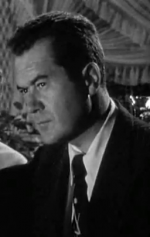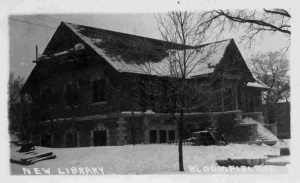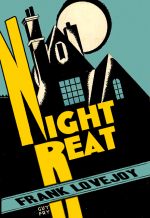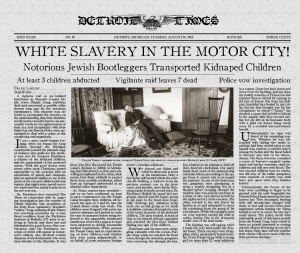Difference between revisions of "The Stars Are Right: Frank Lovejoy"
FrankLovejoy (talk | contribs) (→FRANK LOVEJOY 1932 DOCUMENTS) |
(→FRANK LOVEJOY 1932 DOCUMENTS) |
||
| Line 92: | Line 92: | ||
* [[The Stars Are Right: The Irish Rose: Letter5 | C. de la Fére to F. Lovejoy, 19 August 1932]] | * [[The Stars Are Right: The Irish Rose: Letter5 | C. de la Fére to F. Lovejoy, 19 August 1932]] | ||
* [[The Stars Are Right: The Irish Rose: Letter7 | Boyar Rulianov to V. Grayson, August 1932]] | * [[The Stars Are Right: The Irish Rose: Letter7 | Boyar Rulianov to V. Grayson, August 1932]] | ||
| + | * [[The Stars Are Right: The Irish Rose: Nightsider Treaty | Treaty between C. Ellis and F. Christian et al., c1930]] | ||
===[http://www.detroiteveningtimes.com FRANK LOVEJOY 1932 JOURNAL]=== | ===[http://www.detroiteveningtimes.com FRANK LOVEJOY 1932 JOURNAL]=== | ||
Revision as of 19:04, 14 September 2013

- Return to Active Players
- Return to The Stars Are Right: The Irish Rose.
Name: Frank Lovejoy Str: 13 Occupation: Journalist Con: 08 Nationality: American Siz: 12 Gender: Male App: 12 Age: 31 (August 28, 1900) Dex: 07 Height: 5'8" Pow: 12 Weight: 157 lbs Int: 15 Hair Color: Brown Edu: 16
Played by Andrew Cole.
Contents
FRANK LOVEJOY ARCHIVES
General Information
This page contains links to transcribed source material generated for and about Frank Lovejoy.
The Timeline contains a rough outline of Lovejoy's activities based on dates gleaned from the archived materials.
The Document section contains transcribed personal papers and other items from the archived materials.
The Journal section contains personal writings and/or observations on events within the campaign.
Biography
Born on August 28, 1900 as the third child of ten, Frank Lovejoy chafed at the oppressively blank horizons of his Bloomfield, Iowa home. An avid reader, he dreamed of mountains, oceans and cities, and vaguely resented the burdens placed on him as the oldest surviving child. His parents, Ralph and Jenny Lovejoy, both the children of immigrants, encouraged his ambitions as much as they could, but were able to spare little of his time. Frank left school after completing the eighth grade to help his father in running his grocery store, making deliveries in the store van. Leaving school hurt deeply, but he continued his education as best he could, drawing heavily on the town's Carnegie library. Frank came to view this library, which opened on August 8, 1913, as an early birthday present from the steel magnate.
With the outbreak of the Great War in Europe, Frank saw his chance, and served as a driver for the American Volunteer Motor Ambulance Corps from 1916 until the end of the war. There he met other established and aspiring writers like John de Passos and Olaf Stapledon; Stapledon's position as a conscientious objector to the conflict was especially fascinating to Lovejoy, who adopted similar anti-military positions following his service.
Following the armistice, Lovejoy, along with other Americans who had contributed to the war effort, was offered a place at Oxford. The high school dropout jumped at the chance. After graduating with a degree in History in 1923, he drifted around Europe for a few years, supporting himself as a correspondent for various American newspapers and magazines, among them the Chicago Star and the Detroit Evening Times. Although he tried his hand at writing fiction, producing a handful of short stories and a formless, nervous novel, Lovejoy was a better reader of fiction than a producer of it. He proved a popular newspaperman, however, and so in 1926 he accepted a job as a feature writer for the Chicago Star and returned to the States to pen Night Beat, a column focusing on the disaffected personalities and communities that thrived in the White City after hours. The rash of unexplained occurrences in February, 1929 was an especially fertile time for Night Beat; Lovejoy was widely syndicated, and his May 22 column titled 'I Wish You Were Dead' was shortlisted for the Pulitzer Prize in Editorial Writing.
The stock market crash of 1929 cut deeply into the public's taste for the cavalcade of freaks, loners and dipsos that Lovejoy had chronicled with sympathy for nearly four years. The Star discontinued Night Beat, but offered to keep him on staff as a regular reporter for a substantially reduced salary. With more pride than sense, he declined, and returned to Bloomfield to try his hand at writing another book. Night Beat, a memoir of his Chicago years, was critically well-received but failed to sell well.
- An intriguing mixture of fact, fable and speculation, [Night Beat] offers occult thrills, but fails to find a common thread uniting the weirdos and wastrels that (apparently) throng the labyrinthine streets of night-time Chicago.
- —the Chicago Star's drily ironic review.
With money tight, and chafing again at the limited opportunities of Bloomfield, Lovejoy accepted a job at the Detroit Evening Times in April of 1931. Although now a regular columnist instead of a feature writer, Lovejoy continues to cover the night side of society, prying into the speakeasies, slums and Curtisvilles of the Motor City.
TIMELINE
FRANK LOVEJOY 1932 DOCUMENTS
Lovejoy is a staff writer for the Detroit Evening Times. Enclosed is a selection of articles written by him about the Irish Rose Matter.
- Saloonkeeper Slain As Gang War Erupts - August 5, 1932
- Irish Rose Medico A Mystery - August 6, 1932
- Second "Doctor" In Rose Murder Identified - August 7, 1932
- Cream of Society Fills Rose While Gang War Brews - August 8, 1932
- Macklin's Girl Speaks! - August 9, 1932
- Strange Incident at Curtisville Church - August 10, 1932
- Kansas City Connection Discovered in Irish Rose Murder - August 11, 1932
- International Connection Discovered in Irish Rose Murder - August 12, 1932
- White Slavery in the Motor City! - August 16, 1932
- Heroic Doctor Speaks! - August 17, 1932
- Gangland Doctors Experimenting on Kidnaped Children - August 18, 1932
- "Our Nightmare Ordeal!" - August 21, 1932
- Interview with Parkhurst
Correspondence regarding newspaper articles may be addressed to Frank Lovejoy, Box 13, c/o the Detroit Evening Times:
- Unknown to F. Lovejoy, 8 August 1932
- Unknown Crank to F. Lovejoy, 9 August 1932
- Unknown to F. Lovejoy, 9 August 1932
- H. Flynn to F. Lovejoy, telegram, 10 August 1932
- D. Ferris to F. Lovejoy, letter, 11 August 1932
- D. Rose Darby to F. Lovejoy, 17 August 1932
In addition, several other documents have come into his possession:
- F. Huber to M. de Bonnevault, 15 January 1931
- F. Huber to M. de Bonnevault, list of correspondence, 15 January 1931
- H. Flynn? to M. de Bonnevault, date unknown, pages discovered in a Purple Gang Safehouse by J. Casey
- G. Parkhurst to F. Lovejoy, personal interview, 21 August 1932
- C. de la Fére to F. Lovejoy, 19 August 1932
- Boyar Rulianov to V. Grayson, August 1932
- Treaty between C. Ellis and F. Christian et al., c1930




